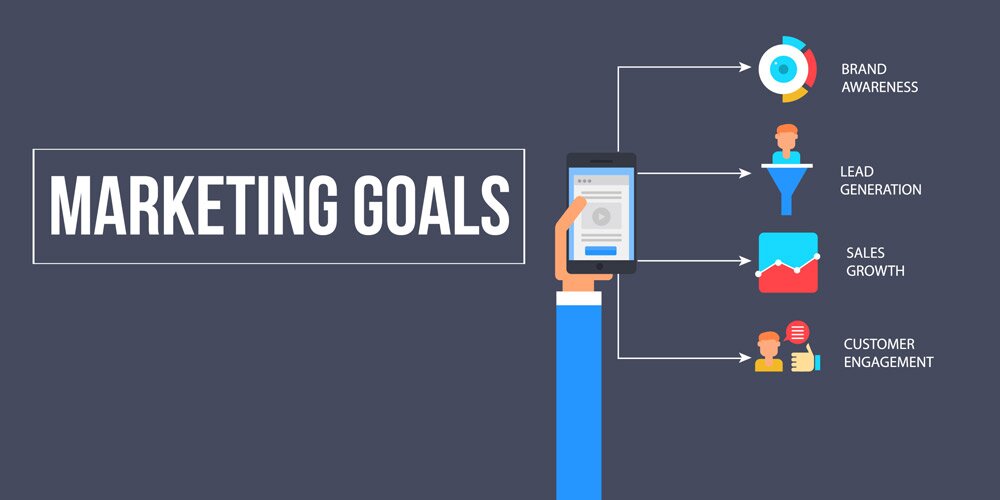
As a marketing agency we are often asked how much a business should be spending on marketing and advertising. This question plagues businesses of all sizes and in all industries. Many have even settled for operating without a marketing budget at all—simply deciding how much to spend on a moment-by-moment basis. The truth is there’s no one-size-fits-all golden rule when it comes to the amount you should be spending on marketing, and we can’t make that decision for your business. What we do know is that budgeting for marketing is an important step to maximize your profits and we can provide you with some tips to help calculate the best amount for your business.

Marketing is an Investment
A marketing budget refers to all costs for marketing, advertising, public relations, promotions, events, and anything else you might blanket under this wide cast net. One thing many businesses get wrong when trying to decide what to spend on marketing is that they view it as an expense rather than an investment.
Marketing is an essential part of making money. With proper planning and implementation whatever you invest in marketing you should expect to make back, with interest. Like any good investment, you may have to part with your cash in the initial stages, but you’re likely to see a big return on that investment in the end. It’s just as the indomitable businessman Henry Ford famously said, “A man who stops advertising to save money is like a man who stops a clock to save time.”

Start With a Goal
Most people determine whether a promotion was successful based on the sales during it. This isn’t always accurate though. You need to start with your sales goal and work backwards to determine what to spend on marketing to achieve that goal. Sometimes you have to spend more than you thought to make the sales you want.
You’ll need to know a few numbers to calculate your budget based on your goals:
Your Desired Sales Target – how much you want to make from the campaign
Your Average Order Value (AOV) – the average amount that a person spends with you each time they buy
You can get your AOV from the back end of your website. If you’re calculating in-store sales, your AOV can be extracted from your point of sale system.
Once you have these numbers, you’ll be able to work out how many sales you need in order to hit your target.
For example, say you want to have sales of $1000. Your average order value is $50. Therefore, you’ll need 20 sales at $50 each to hit your target.
Next you can use these numbers to work out what your marketing budget should be.
For this part, you’ll need to know:
Your Average Conversion Rate – the percentage of people that actually purchase from you
Your Conversion Cost – what it costs to get a customer “in the door”, i.e. to click through from an ad to your website, or to come into your store.
This number can vary significantly, depending on the type of campaign you’re going to run. For ease of this example, let’s say you’re using Facebook ads, and you know from experience, that it costs you 20 cents per click and your average website conversion rate is 2%.
Remember, we need 20 sales to hit the target. With a conversion rate of 2%, that means you’ll need 2000 people to click through to your website.
At a cost of $0.20 per click, you’ll need to spend $200 to reach your sales target.
This is the point where many people make the mistake that is fatal to their campaign. The idea of spending hundreds of dollars on advertising without a guaranteed return on investment scares them, so instead of putting in the funds necessary to see that return they spend $20 here boosting a post or $50 there on an ad, and create only a handful of sales.
But the numbers don’t lie. In this example, if you only spent $50 for this same campaign, you could only expect 250 website visits. With a 2% conversion rate, you’d expect 5 sales totaling just $250.
This campaign is actually equally as successful as the first scenario we described, but many retailers don’t take the time to run the numbers. Instead, they get forlorn at a “measly $250 in sales”.
*Note that in-store conversion rates tend to be much higher than digital, so you’ll need less people through the door in order to hit your sales targets.
Tracking your numbers is a must when it comes to working out how much you should spend on advertising and marketing for your retail business. By setting your desired goal using real numbers rather than dream figures, you’ll more accurately be able to work out how much you need to spend in order to meet your sales targets. Working backwards from your sales goals to calculate your marketing budget is the most important step to increasing your overall sales and profits.

Have a Separate Budget for Your Foundation
Some things aren’t included in this budget; these things are what we consider to be your marketing foundation. Without a solid marketing foundation, your day-to-day marketing activities will be much less effective so it’s important to set aside to money to build this infrastructure for your business.
In general, your marketing foundation includes:
- Branding
- Marketing strategy
- Website design and development
- Other things of this nature
For example, an up-to-date, performance-based website is key to a solid marketing foundation but you will likely have to exceed your marketing budget to invest in building your website and updating it once every three to five years. Once you do this you will still need to spend on advertising to drive traffic to it. After all, even the most well designed website in the world means nothing if no one knows to visit it. Thus, foundational costs such as these should be considered separately from your general marketing budget.
We have found that if you follow these basic guidelines you will be more satisfied with your marketing efforts and see a bigger return on investment. So why not get started today? Contact a Banner Marketing rep for more great ideas to bring your marketing campaigns to life.


